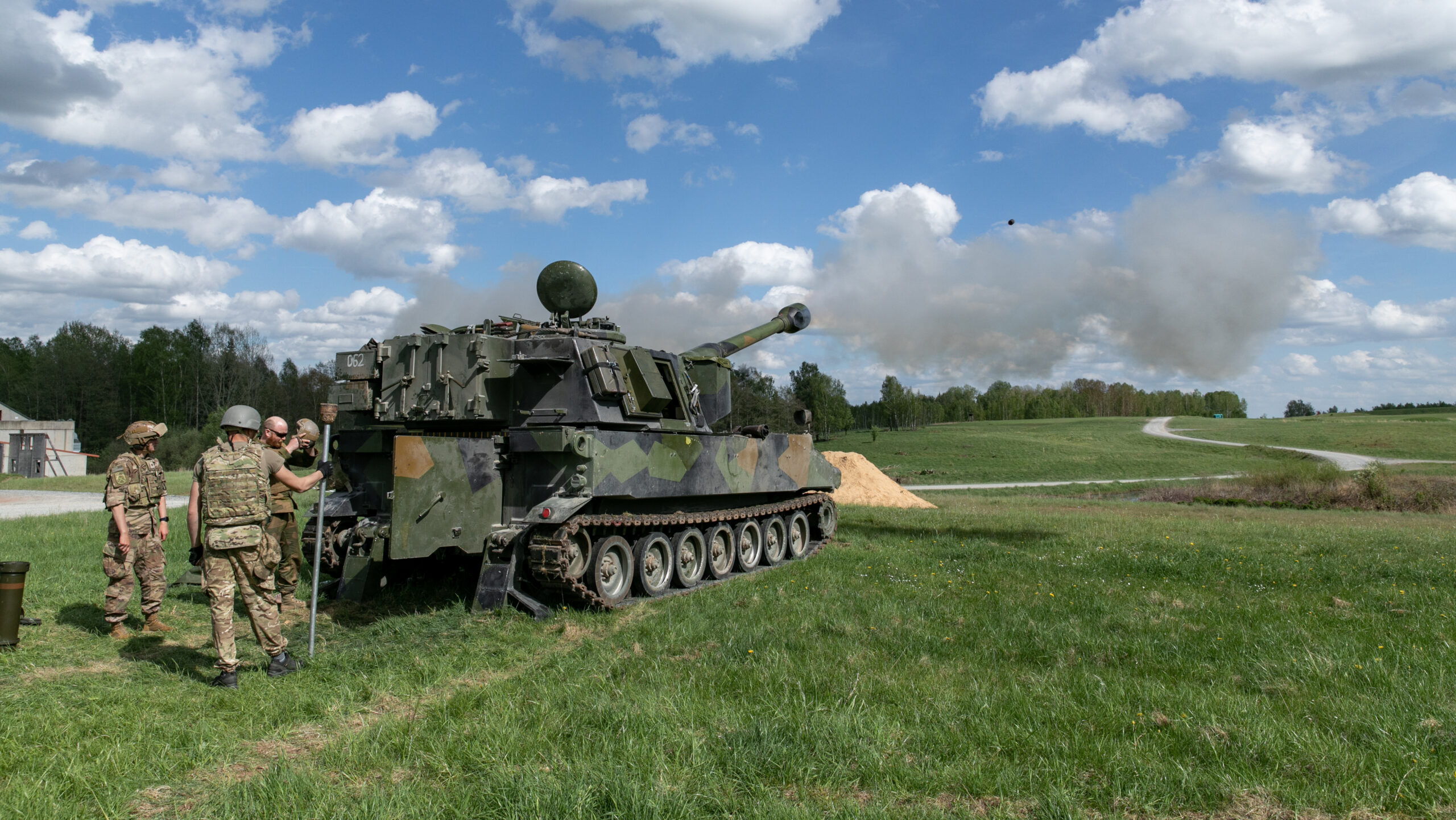
WASHINGTON — After months of pauses and uncertainty, the Army released a request for proposal for its self-propelled howitzer competition, indicating that the service is prepared to launch forward with its mission to modernize its field artillery portfolio.
“Over the past 8 months, the US Army has been re-evaluating its objectives for modernization and adjusting those objectives to best support the new Army Transformation Initiative (ATI) strategy. Comprehensive analysis has confirmed the importance of 155mm self-propelled artillery system-of-systems to the Army,” read the request for proposal posted Monday. “Consequently, the US Army is considering opportunities to rapidly conduct soldier experimentation.”
After scrapping development of its Extended Range Cannon Artillery platform, Army officials embarked on a world tour last year searching for existing self-propelled howitzers. After seeing the offering of five companies — BAE Systems, Elbit Systems, General Dynamics, Hanwha and Rheinmetall — the service announced it was launching a competition to pick an existing platform.
The competition was planned to kick off with the release of a Phase I request for proposal in mid-February, Breaking Defense reported in January. However, it was one of the programs put on hold as a result of ATI. Monday’s RFI is the first document that the service has published in regards to the long-awaited competition since it was paused earlier this year.
The RFI, authored by the Program Executive Officer for Ground Combat Systems, called on vendors to offer solutions that will “likely involve temporarily” providing self-propelled howitzer systems to brigades participating in the Army’s Transformation in Contact (TiC) initiative — the service’s push to rapidly test new equipment with units both inside the US and abroad to understand how that technology will operate in real-world environments.
Though the Army said “the scope and organization of a soldier experiment for self-propelled artillery is still being defined,” the RFI suggests that the service is primarily looking for US-made and -manufactured solutions.
For example, the RFI directs respondents to “provide a summary of your current supply chain and current suppliers used in the USA, including a map of major supplier locations. Highlight major supplier locations outside of the USA.”
“If not currently produced in the USA, describe how you would onshore production of the proposed system to the USA, including barrel production. Identify current US manufacturing facilities and sources of supply,” it added.
The RFI goes on to ask industry how long it would take to deliver one US-produced self-propelled howitzer, and how long for the delivery of six.
One industry source who has been closely following the program as a potential competitor raised his eyebrows at parts of the RFI, including its tight timeline, especially amid foreign conflicts in which the artillery could be put to real-world use.
“We are not just sitting around on platforms. … I sell those,” the source said. “Do [companies] do a demo or do [they] supply a war in Ukraine or Israel?”
The source continued that it takes about two years to produce something like a howitzer, given the long lead times on parts and forging the barrel. Out of the five companies who participated in last year’s roadshow, several do not currently produce their platforms exclusively in the US.
Despite those concerns, the RFI and associated questions in it do not mean the Army will ultimately require interested companies to hand over six howitzers within the next couple of months for a demo. That number and timeframe could shift based on responses that are due back to the Army by Oct. 10.
“This RFI is for informational purposes only,” the Army document said. “The information in this notice is subject to change and is not binding on the USG.”
.
.
.



